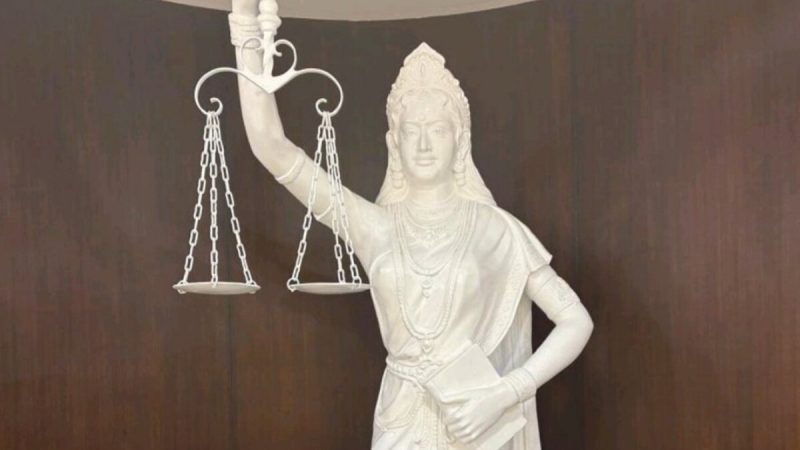The Indian Supreme Court has redesigned the decades-old statue of ‘Lady Justice’, long associated with courts and legal institutions. The traditional depiction of Lady Justice with the blindfold and the sword in the hand has been changed. The new statue doesn’t have the blindfold or the sword. Now it has open eyes and the Constitution in hand. Keep reading to explore the details about the old and new statues of Lady Justice in the Supreme Court.
Supreme Court’s Old Lady Justice Statue vs The New Lady Justice Statue
The Supreme Court’s Old Lady Justice Statue had the blindfold on which symbolised equality before the law, implying that everyone is equal in front of the law and that the courts cannot see the wealth, power, or status of anyone who appears before it. On the other hand, the sword and the hand represented the authority and power to punish injustice, and were a symbol of punishment.
The New Lady Justice Statue reflects a modernised version of justice. The removal of the blindfold from the new statue symbolises that ‘justice is no longer blind’. The new Lady Justice statue was commissioned at the orders of Chief Justice DY Chandrachud. The open eyes and the sword removed from the hand and replaced with the constitution book can be seen as a way to leave the colonial legacy behind.
Also Read: Supreme Court Halts New Mining Permits In Aravalli Range In Delhi, Gujarat, Haryana, And Rajasthan
The Common Factor Between The Old And New Lady Justice Statues
Both statues shared a common feature, the scales. The scales held in one hand represent fairness, which is unchanged. It signifies that justice remains in accordance with the constitution, guaranteeing equality for all with fairness and no impartiality.
The justice scales demonstrate equilibrium in both society and the legal system, guaranteeing that the court will consider all relevant facts, arguments, and evidence.
Also Read: From Tallest To Newest, 5 Places In The World That Are Home To Dr. B.R. Ambedkar’s Statues
The redesigning of the statue can represent a larger shift in the Indian judiciary. This change has been added to the list of efforts in reforming India’s legal system, like the replacement of colonial-era criminal laws with the Bharatiya Nyaya Sanhita.
Cover Image Credits: X/Sachin Sharma (@sachinsharma121)
For more such snackable content, interesting discoveries and the latest updates on food, travel and experiences in your city, download the Curly Tales App. Download HERE.

